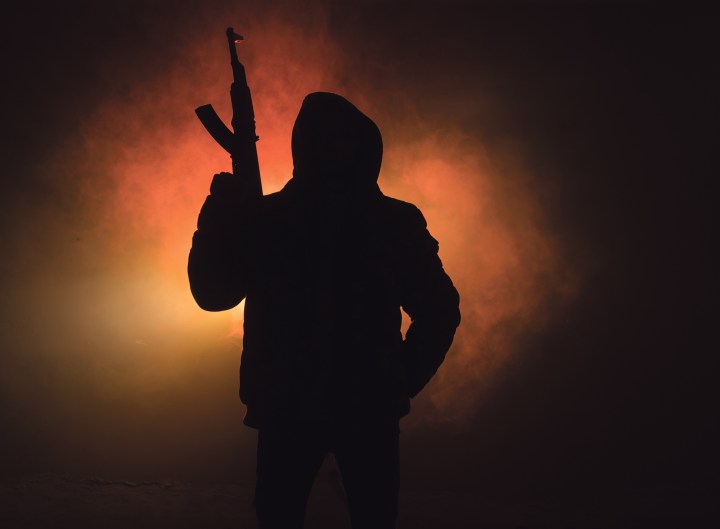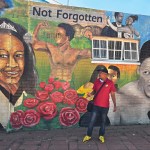DM168 INVESTIGATION
South Africa’s three bloodiest days: 342 dead and we are still in the dark

At least 342 people died as a result of the civil unrest sparked by the jailing of former president Jacob Zuma, the majority of whom between the start of Monday, 12 July, and the end of Wednesday. 14 July. These were the three bloodiest days in South Africa’s democratic history. DM168 set out to investigate how this shocking death toll was reached.
First published in the Daily Maverick 168 weekly newspaper.
After weeks of investigation, DM168 has compiled some degree of information about how 109 deaths happened in South Africa during July’s civil unrest. This is, to our knowledge, the most comprehensive unofficial register available at this point – yet it accounts for less than one-third of the 342 total deaths announced by authorities.
Of the cases where the cause of death was able to be established, at least 70% died as a result of being struck either by live ammunition or rubber bullets at close range. Of particular concern is the fact that the majority of these shootings appear to have been carried out by civilians, starkly highlighting the extent to which vigilantism and criminality became the order of the day.
As will be detailed, however, there were also an astonishing number of different ways in which those involved in looting met their death. Stampedes, which seem to have become a catch-all term for the cause of death of those who did not die by murder, were just one.
Authorities have been extremely tight-lipped about how, exactly, more than 300 South Africans died – while providing quite a high level of detail on the infrastructure damaged. In some cases, this is probably due to genuine uncertainty: as we will lay out, it is unclear which deaths should be attributed to particular events and areas. Looting, by its nature, is chaotic. As recently as 30 July, about two weeks after the onset of the violence, bodies were still being unearthed.
In other cases, authorities may be trying to downplay deaths to avoid fanning the flames of racial tension, which are burning through KwaZulu-Natal in particular. When it comes to the Phoenix massacre, our investigation suggests that the death toll may be higher by some margin than that announced by Police Minister Bheki Cele. There is also evidence to suggest that similar events took place in the suburb of Chatsworth, which have gone largely unreported.
Around Durban, we found brutalised communities still in a state of shock, fear and anger from the events of those three deadly days. Many were afraid of what would happen when soldiers move out. Others expressed a sense of anticipation: without the military, they said, revenge attacks could be launched.
In dozens of interviews in KwaZulu-Natal and Gauteng, one name was never mentioned: that of Jacob Zuma. The odd piece of graffiti calling for the former president’s release was the only reminder that these traumatic events were sparked by Zuma’s incarceration. For the ordinary people caught up in the mayhem, Zuma appeared to be scarcely an afterthought.
While the bill is being tallied in the billions for the infrastructure and services damaged in the unrest, the human toll has barely begun to be reckoned with. We found people scarred both physically and emotionally by violence and loss not experienced so rapidly on such a scale since apartheid. To try to sweep the events of these three bloodiest days under the carpet risks reaping another whirlwind down the line.
Inside the looting
“I think he went to the looting in Makro, there by SAB [South African Breweries],” Thobeka Ngobani said candidly.
She was speaking to DM168 from her home in the township of KwaMpande in Pietermaritzburg. Ngobani’s half-brother, 24-year-old Mpilwenhle Zuma, died in the unrest on the night of Wednesday, 14 July.
Zuma – no relation to the former president – and his friend apparently succeeded in looting gadgets and food. Because they had no transport, however, they had to make the long journey from Makro in Campsdrift Park back to KwaMpande by foot.
Walking late at night, Ngobani subsequently heard from Zuma’s friend, they were accosted by four “gangsters”. The gangsters demanded Zuma’s Nike jacket and sneakers, which he gave to them. Zuma and his friend walked to the nearest tuckshop and asked for assistance, which appears not to have materialised. Then they split up and ran. That was the last time Zuma was seen alive.
Growing increasingly concerned, Ngobani started posting on social media, asking if anyone had seen him. On Saturday, she received messages telling her that an unidentified body had been found on the road. She went to the Fort Napier mortuary on Monday and identified him.
“He was not stabbed,” Ngobani said. “I think they strangled him. But on the death certificate, it said natural causes.”
Police have announced two categories of deaths relating to the unrest: murders and inquests. The former is self-explanatory. The second covers all other causes of death, but there has been little detail given as to what exactly that means.
Professor Debbie Bradshaw, chief specialist scientist at the Medical Research Council (MRC) explained the standard process for recording a death in South Africa to DM168.
“In general, a doctor needs to certify the medical cause of death. The death notification form goes to Home Affairs. There it is sealed, and eventually the form gets to Stats SA, where they process the causes of death,” Bradshaw said.
In cases of unnatural death – as would be the case with all looting-related deaths – the body has to go to forensic pathology services for an investigation. Bradshaw explained that the “inquest” refers to the process whereby the body is examined by a forensic pathologist and then a decision on the manner of death is certified by a magistrate.
Thobeka Ngobani’s story illustrates a number of complex aspects relating to the recording of unrest-related deaths. In many cases, it seems that bodies were simply found in the aftermath with little visible indication as to what caused death. In some instances, it also appears that looters were killed not by vigilantes, but by criminals looking to steal the looted goods.
The Pietermaritzburg Makro that Ngobani’s half-brother set out to loot would become Ground Zero of the unrest-related chaos in the city. It is located in the office park of Campsdrift, alongside SAB and other businesses. Outside the scorched and ransacked premises, signs are now hung reading “Caution – Danger. Unsafe Building – Do Not Enter”.
Acting Minister in the Presidency Khumbudzo Ntshaveni would tell journalists on 16 July 2021 that seven bodies had been discovered at the Makro store. The final death toll attached to this one shop appears to be much higher – and it exemplifies the many gruesome ways to die during the dangerous business of looting.
Security guards outside Makro, speaking to DM168 on condition of anonymity, said that by Thursday, 15 July, they had counted 21 bodies strewn across the road outside the office park.
“It was like a war around here. People suddenly went mad,” one guard said. Looters were stealing alcohol and drinking it on the spot. When soldiers arrived to try to secure the buildings, looters ran in all directions. Some sprinted on to the road and were killed by oncoming traffic. Others jumped or fell into a river across the road from the shops and drowned.
Witness Lindokuhle Mkhize, who DM168 encountered washing containers in the river, said he saw people attempting to drive forklifts even though they lacked the necessary experience to do so. In the course of their attempts to move heavy boxes of alcohol from the shelves, they sent boxes tumbling, which ended up crushing some looters to death.
These nightmarish scenarios were not limited to Pietermaritzburg. Someone who participated in the looting in Durban told DM168 that he had witnessed looters dying after being crushed under huge hunks of frozen meat. The most recent dead bodies found in a looted building in the Durban CBD, meanwhile, appear to have become trapped inside and burnt to death while the building was set alight.
A morgue employee, speaking on condition of anonymity, told DM168 that it would be a mistake to assume that most looters died from being shot or beaten to death.
“One has to bear in mind that there were people who died in stampedes; some fell over bridges while trying to run away from the police; some ran into traffic on freeways and were hit by vehicles,” she said.
In some cases, eerie traces left behind speak of violence without telling the full story. At the Chris Hani Mall in Katlehong, Gauteng, an employee took us inside a Game stock room which had been looted in addition to the items on the Game shop floor – prompting suspicions of an inside job.
On the mezzanine level of the Game stock room, large blood stains were visible in several areas. The employee who showed us around said that he did not know what had happened there, but that while cleaning they had retrieved shotgun shells and rubber bullet casings.
Chris Hani Mall spokesperson Gayle Crow told DM168: “We are aware of one body that was found outside the gates but that is still under investigation.”
What happened in that Game stock room? There is clear evidence of bloodshed, but few further answers: much like the wider story of the unrest itself.
Thobeka Ngobani, searching for explanations about why her half-brother decided to participate in the looting, suggested: “Looting was like a fashion thing. There was peer pressure and hunger. Everyone was going and trying their luck. Everyone was taking opportunities.”
She sighed and shook her head.
“Looting has brought pain and sorrow,” Ngobani said. “People expected to gain, but instead they lost their lives.” DM168
This story first appeared in our weekly Daily Maverick 168 newspaper which is available for R25 at Pick n Pay, Exclusive Books and airport bookstores. For your nearest stockist, please click here.





















 Become an Insider
Become an Insider
The article mentions looters driving forklifts which sent boxes of alcohol tumbling down ontop of other looters & crushing them to death.
Bizarrely at the bottom of the article is a PSG Wealth ad with a picture of some guy driving a forklift lifting bottles & captioned: “What goes up DOESN”T have to come down”.
A rather odd choice of ad?
Horrifying – so much death and destruction. And the senior ANC people behind all this are never mentioned – what happened in Phoenix, shocking though it might be, is now the cover story.
Ayes I find it bizarre that no one is talking about the real issue…only side issues and speculation. Is this because the real issue is not to be spoken about? Ie the split in the ANC between Zuma faction + EFF vs CR faction+ Biz SA? A direct confrontation of Socialism vs Capitalism? One has to wonder who is funding the Zuma EFF faction and thereby calling the shots….we know who is funding the CR faction – that is the SA taxpayer! Looks like with Tito’s departure, the taxpayer will be called to fund much more….sadly this is the only way to keep Capitalusm and Democracy alive in this country! A dismal choice. Birth control and education are the only possible saviors and I can’t see either happening on a large scale anytime soon!
Jacob Zuma a socialist? Ha ha ha!!!
WHAA! Zuma and his kids socialists? I agree with Rob, Jane, you surely aren’t serious. What about his stashed billions off shore thanks to the looting of the Guptas, the Arms Deal (for which he will never be held accountable), etc. etc.? Just asking?
The elites in the soviet block cornered all luxury goods while hammering their victim populations with socialist ideoly inspired misery
The whole tragic story is so extraordinary- the lengths that some went to obtain liquor- the bizarre manner of so many deaths- it does indeed seem as if parts of the country were totally out of control, caused in the main by deprivation, greed, vindictiveness( why torch what you can’t steal?) And of course , lack of policing added to the public mayhem. Will any lesson be learnt?
Davis et al say “Of particular concern is the fact that the majority of these shootings appear to have been carried out by civilians, starkly highlighting the extent to which vigilantism and criminality became the order of the day.” and in their Soweto Doctor story they say “one of the most shocking to encounter was Soweto’s Ndofaya Mall – because it is located literally across the road from the Meadowlands Police Station.”
Really weird that when the people (police) responsible for the safety of people and property are absent and citizens assume that duty they become criminals and vigilantes.
Utterly tragic- but thank you for the excellent investigative journalism – nowhere else would we ever hear about this kind of information. What it also highlights is the utter inadequacy of the forensic unit of the SAPS. The body of a young man is found on the side of the road on the night of the riots and is declared “natural causes”? No forensic post mortem? NO investigation? This is but one case of the many similar cases. There is no capacity to deal with this kind of tragedy. Just one more example (as though we needed any more) of how the ANC continues to utterly fail us, the people.
I don’t often comment but I came back through what was left of Mooi River on that Saturday back to Durban. I had left Estcourt and Wembezi early enough to avoid the subsequent disturbances. My girlfriend lives in Phoenix and was terrified and me for her safety. Anyone who was in Durban won’t forget that night, the lawlessness, the pathetic lack of the police and now there is a narrative of the “Phoenix Massacre.” Wake up, this country was in the grip of a violent organised coup. No one was around to help. Ordinary citizens had to help themselves.